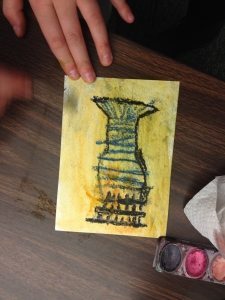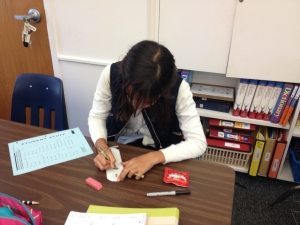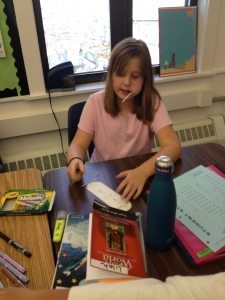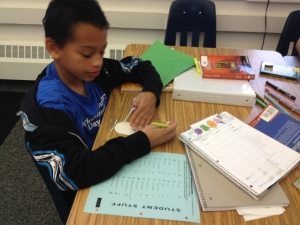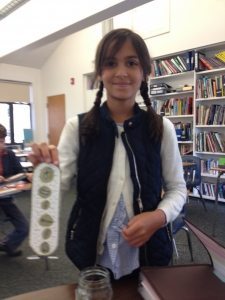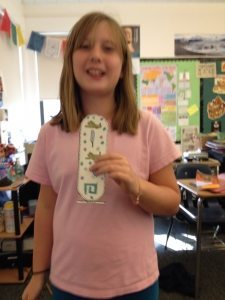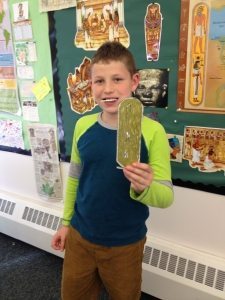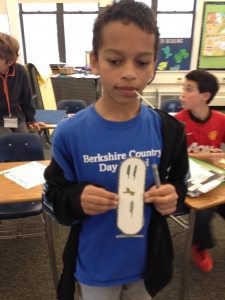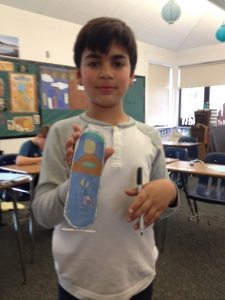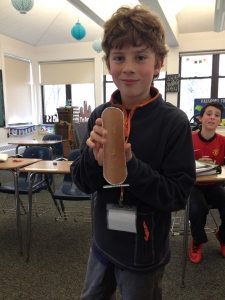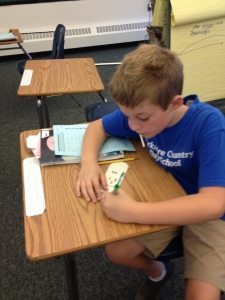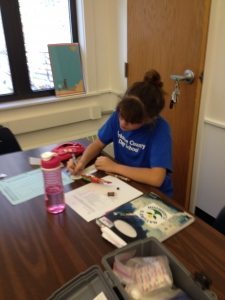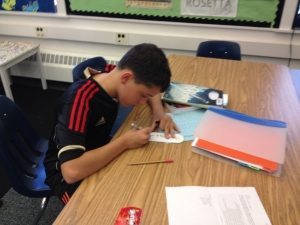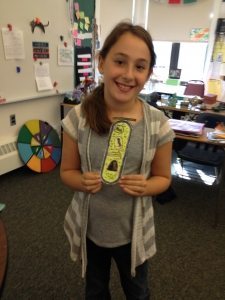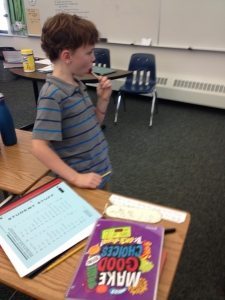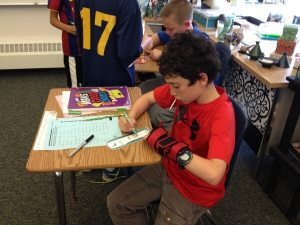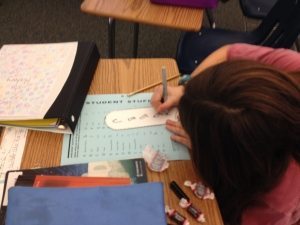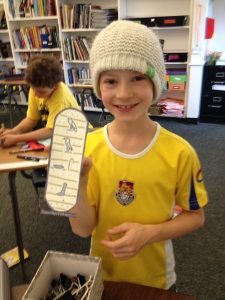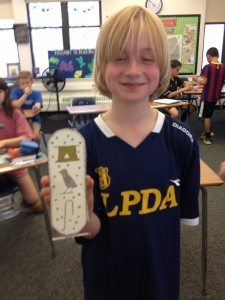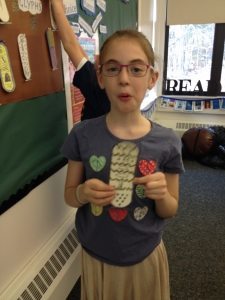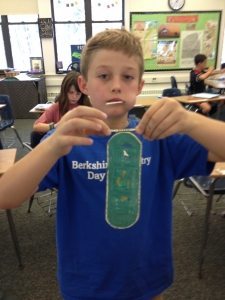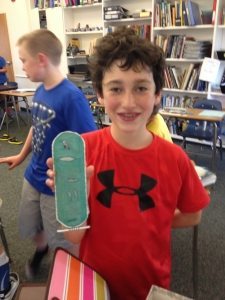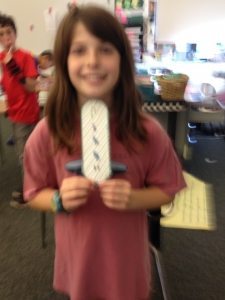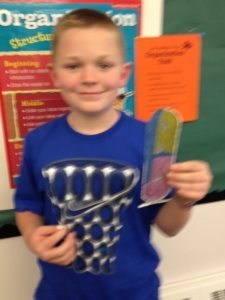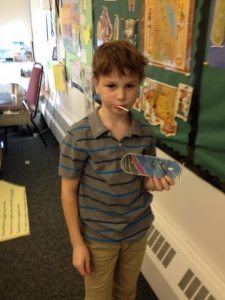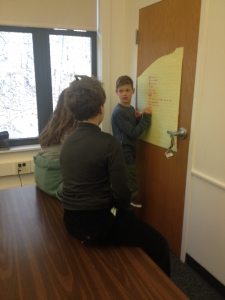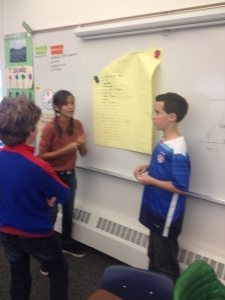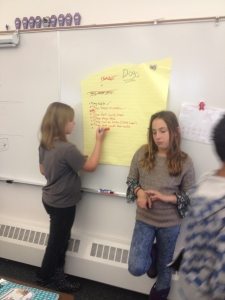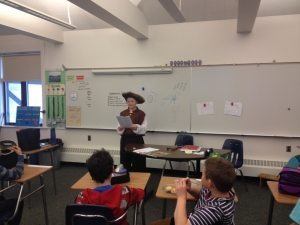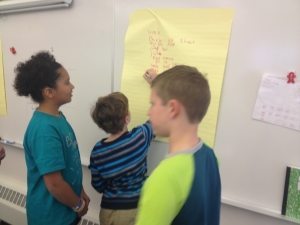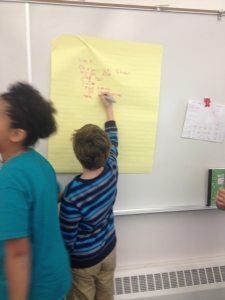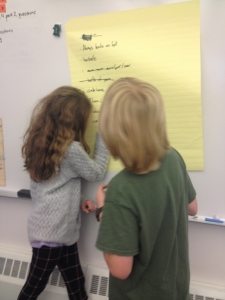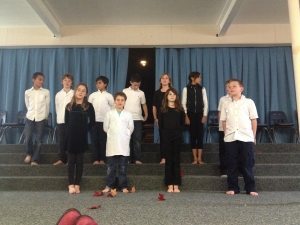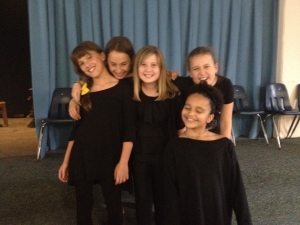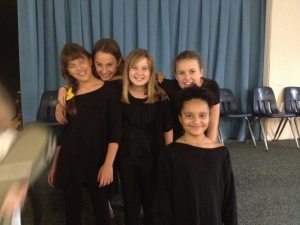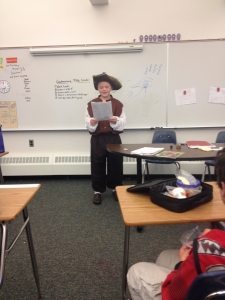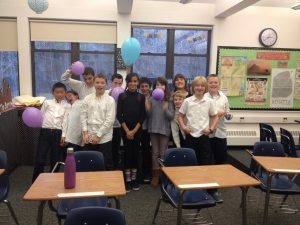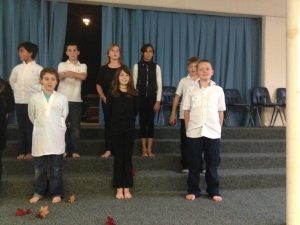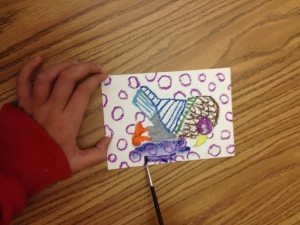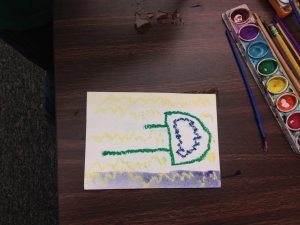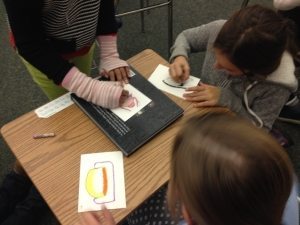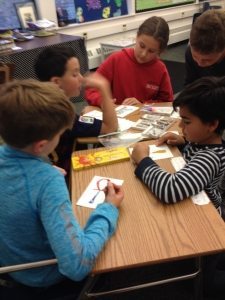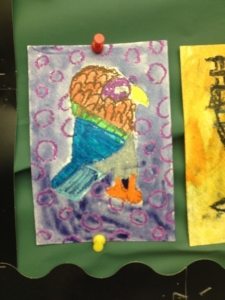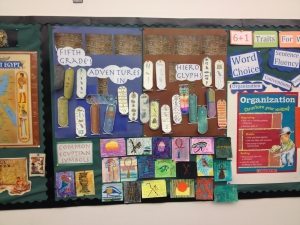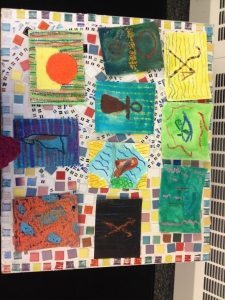Grade Five has left Mesopotomia in the dust, and is now immersed in Egypt, which is also pretty dusty! We’ve been reading about the Old and New Kingdom periods and making connections with Mesopotomian rulers. As nearly every aspect of Egyptian life was driven by their belief in the underworld, so have our class projects. In exploring hieroglyphs, each student created his or her own cartouche, a symbol of protection in the afterlife journey. We used watercolors and oil pastels on bristol board to craft some of the more popular Egyptian symbols you’d find inside the tombs. For our year-long civilization creation project, we devised personal written languages, along with a sample and a translation. Soon, the long-awaited chicken mummification process will commence. Over a four-month period, we will preserve our little Chickopatras and Tutenchickies using the exact same process that was used for thousands of years in Egypt. And we will be filling their sarcophagi with all of the things that the poultrymummies need in their afterlife.
In Writer’s Workshop, we are discussing ways to organize stories and non-fiction pieces. Some of these include chronologic, reverse chronologic, “looping”, according to features, and compare and contrast. To model the compare and contrast approach, students worked in small groups to create a list of features that were specific to cats, dogs or both. We discussed different ways to organize the features, modeling both a Venn diagram and a T-chart. Then we reconvened as a group, to share these features and brainstorm how we might organize the data into paragraphs. After adding topic sentences to each paragraph, as well as transition words to help shape our lists into fluid sections, we have written an essay together on giant chart paper. Currently the students are brainstorming their own features on a variety of topics including cookies vs. cake and country life vs. city life.
In English, we are approaching the dramatic end of Where the Red Fern Grows. All of the highlighting and annotation will serve the students well, as they will soon be learning to write their very first literary essay in upcoming weeks. We will be practicing using quotations and indirect characterization to support a thesis. In our weekly spelling tests, we continue to draw from vocabulary from both WTRFG, and our history text, The Story of the World, as well as commonly misspelled words. This term students are also required to know the parts of speech for each spelling word. In Grammar, we are learning to identify the form and meaning of suffixes that can aid students in the identification of parts of speech, as well as how to distinguish between run-ons, comma splices and fragments.
Finally, our class poetry readings were simply stellar this past week. I could not have been more proud of their crisp execution of poems on the theme of language.
Helpful Hints:
- PTR projects are due Tuesday, November 24. After Thanksgiving, they will be asked to select books for the December project, which will be due December 17. Please mark your calendars accordingly.
- Ski Friday forms need to be brought in or sent to the office.
- Our time in Egypt is filled with many projects. If you happen to be at the dollar store and would like to contribute one item: a pack of modeling clay in assorted colors, spices like cinnamon, nutmeg or cloves, a roll of gauze or colored duct tape, or a can of salt–these are all things for our mummification process.
- Look for Scholastic book forms in your child’s planner tonight. These are due back to me on Monday, Nov. 23 (in one week). There are tons of excellent and inexpensive books here!
Thank you for all your support. This year continues to be one of smiling faces, challenges, surprises and joy. Cheers!
Jilly

